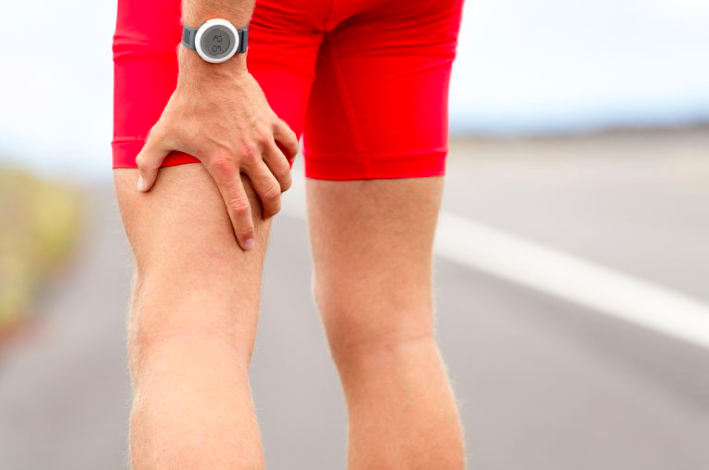With The World Cup fresh in our minds… We thought we could review one of the most common types of injury… The almighty hamstring Strain! Of course, this isn’t just relevant to football… It’s a common problem in virtually any active sport.
The hamstring is by no means a “single string”. It is in fact a group of three muscles that run across the back of the thigh. The hamstring is basically what allows you to bend your leg at the knee.
Symptoms of a Hamstring Injury
The symptoms of a hamstring injury are quite easy to spot. It will typically cause a sudden, sharp pain in the back of the thigh that could potentially stop you mid-stride. After such an injury, the knee may not extend more than 30 to 40 degrees short of straight without intense pain. Hamstring Injuries (like most strains) are simply caused by excessive stretching or tearing of muscle fibre beyond their limits.
How Severe is a Hamstring Injury?
The severity of a hamstring strain can vary like anything else. Strains are classified as mild, moderate and severe degree depending on the extent of the injury. Please find the symptoms of each level below:
Mild (Grade 1)
How is a Hamstring Injury Caused Exactly?
Football players quite often suffer with hamstring injuries because of the amount of running they do for example. Here are some of the main contributing factors:
How do you treat a hamstring injury?
The severity of the injury will determine the method for healing. This is because of the amount of pain and the limited ability to use muscle. A third-degree injury normally results in a trip to the physician for evaluation and professional advice moving forward. Less severe injuries can be treated at home. Here are some of the main pointers:
How to Prevent an Injury
The hamstring is by no means a “single string”. It is in fact a group of three muscles that run across the back of the thigh. The hamstring is basically what allows you to bend your leg at the knee.
Symptoms of a Hamstring Injury
The symptoms of a hamstring injury are quite easy to spot. It will typically cause a sudden, sharp pain in the back of the thigh that could potentially stop you mid-stride. After such an injury, the knee may not extend more than 30 to 40 degrees short of straight without intense pain. Hamstring Injuries (like most strains) are simply caused by excessive stretching or tearing of muscle fibre beyond their limits.
How Severe is a Hamstring Injury?
The severity of a hamstring strain can vary like anything else. Strains are classified as mild, moderate and severe degree depending on the extent of the injury. Please find the symptoms of each level below:
Mild (Grade 1)
- Muscle stiffness, soreness, and tightness in the back of the thigh
- Little noticeable swelling
- A normal walking gait and a range of motion with some discomfort
- Flexing the knee to bring the heel up
- Gait affected, may have a limp
- Muscle Painsharp twinges, and tightness in the back of the thigh
- Noticeable swelling or bruising
- Painful to the touch
- A limited range of motion and pain when flexing the knee
- Pain during rest which becomes severe with movement
- Difficulty walking without assistance
- Noticeable swelling and bruising
How is a Hamstring Injury Caused Exactly?
Football players quite often suffer with hamstring injuries because of the amount of running they do for example. Here are some of the main contributing factors:
- Poor flexibility
- Poor muscle strengths
- Weak glutes improper or no warm up
- A history of hamstring injury
- Doing too much too soon
How do you treat a hamstring injury?
The severity of the injury will determine the method for healing. This is because of the amount of pain and the limited ability to use muscle. A third-degree injury normally results in a trip to the physician for evaluation and professional advice moving forward. Less severe injuries can be treated at home. Here are some of the main pointers:
- After an injury, be sure to rest the injured muscle, sometimes for multiple weeks.
- Anti-inflammatory can be effective in terms of treating pain and potential swelling.
- R.I.C.E – Rest, apply ice, compression and elevate the leg if possible.
- A thigh wrap can be applied to provide support for the healing muscle.
How to Prevent an Injury
- Thorough warm-ups
- Stretching after a workout
- Avoid doing too much, too soon!

